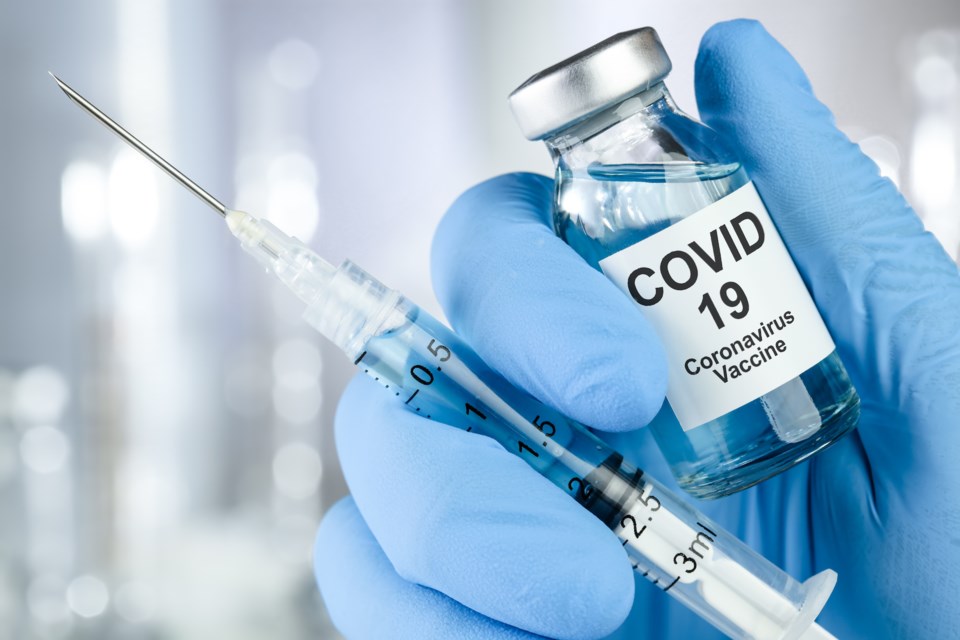Since June 1, when local case data in the North Bay Parry Sound District Health Unit was newly sorted by vaccination status, the fully vaccinated group's share has climbed to nearly 27 per cent of total cases. Partially vaccinated individuals make up nearly 18 per cent, while the unvaccinated group accounts for 55 per cent of the cases.
Why has the share of district COVID-19 positive cases shown a steady increase among the fully vaccinated?
Well, it's math. And, science, according to officials from the health unit.
Public Health Physician Dr. Carol Zimbalatti stresses "it's important to remember the proportion of unvaccinated to vaccinated individuals, at this point. Our population does have a very high vaccination rate."
Although 85 per cent or 11.1 million eligible Ontarians 12 and older have received two doses of the COVID-19 vaccine, as of Thursday, that group "still represents a minority of the cases that we're seeing," explains Zimbalatti. "So, proportionately, the unvaccinated do represent a drastically higher rate of cases than the vaccinated do, it's just that the unvaccinated are a smaller per cent of the population."
As of Thursday, 88.59 per cent of eligible Ontarians had received at least one dose of the vaccine, while 85.27 per cent had received at least two doses.
According to COVaxON, the province's vaccination reporting system, for cases reported Nov. 11, the unvaccinated case rate per 100,000 was 8.11, for partially vaccinated it was 2.95 per 100,000, and for fully vaccinated, 1.99.
Medical Officer of Health for North Bay Parry Sound, Dr. Jim Chirico, observes, "If you look at hospital admissions, if you look at ICU admissions," the fully vaccinated are experiencing "a significant reduction of about 82 per cent of just getting COVID-19, a 94 per cent reduction of being hospitalized, and a 97 per cent reduction of ending up in the ICU.
"If you are unvaccinated you certainly are at a higher risk."
According to the COVaxON data, the unvaccinated case count for Nov. 11 was 334, partially vaccinated was 18, and fully vaccinated was 245. There were 45 cases with vaccination status unknown. Omitting the unknown cases, the data from Nov. 11 shows 11 per cent of eligible unvaccinated Ontarians accounted for over 41 per cent of the cases.
"People are saying this is the wave of the unvaccinated. It very much is," adds Chirico. "What we're seeing is the more severe illnesses are occurring in the unvaccinated or partially vaccinated."
From the same data, hospitalizations by vaccination status (see graphic above) show 62 unvaccinated in the ICU, four partially vaccinated, and 18 fully vaccinated, meaning over 73 per cent of positive cases admitted to the ICU come from the same 11 per cent of the provincial population that is unvaccinated.
For positive cases who are hospitalized but not in the ICU, 89 are unvaccinated, 15 are partially vaccinated, and 64 are fully vaccinated. Unvaccinated individuals comprise nearly 53 per cent of this group, partially vaccinated 9 per cent, and fully vaccinated 38 per cent.
"In general, we do expect there to be breakthrough cases. Nothing is 100 per cent. We know that's going to happen," advises Chirico. "That is why there has been ongoing surveillance with these vaccines, especially in the vulnerable populations.
"This is why we have moved to third doses for these groups. The elderly, those that have compromised immune systems. That's where we were seeing the slow decline and the waning vaccine immunity was occurring."
